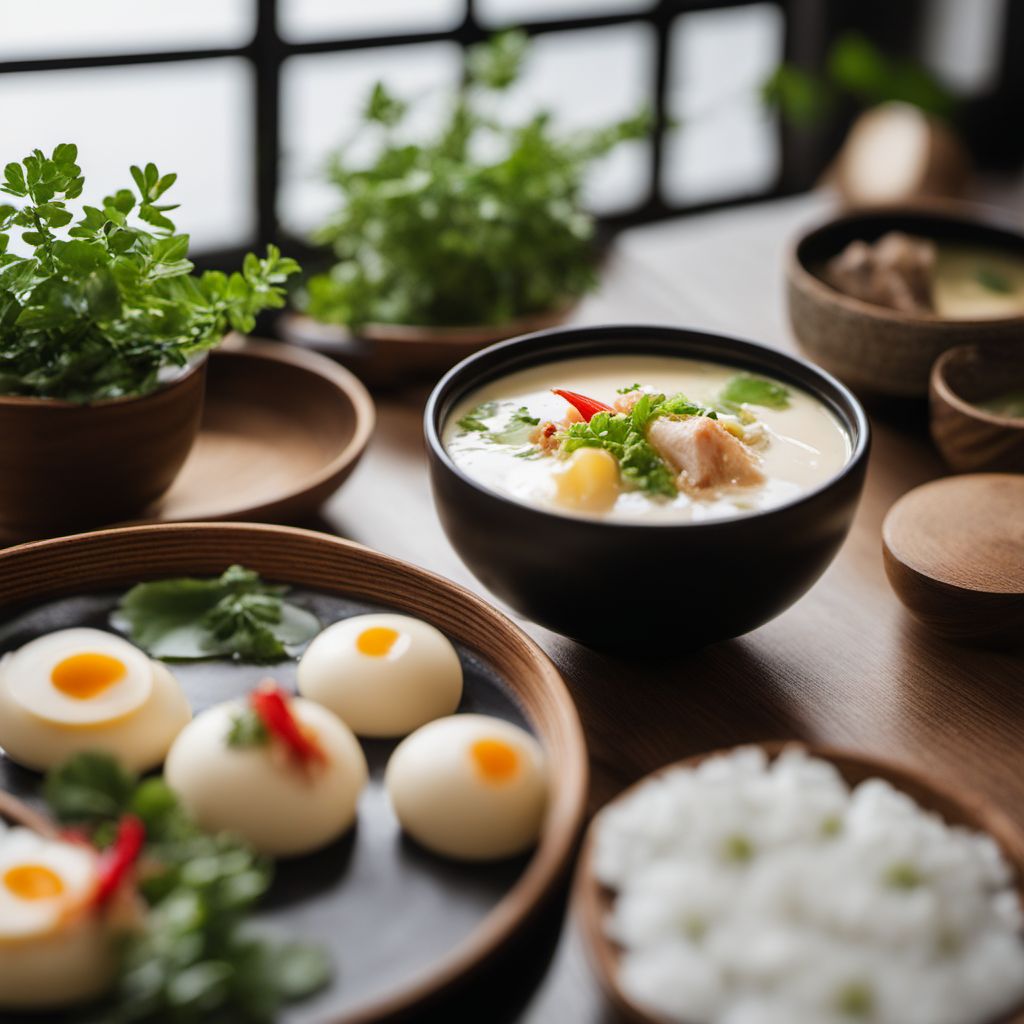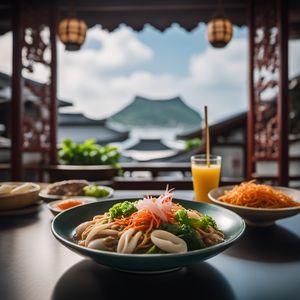
Dish
Chawanmushi
Chawanmushi is a delicate and flavorful Japanese dish made with eggs, dashi broth, soy sauce, and mirin. The mixture is then steamed in a small bowl with a variety of ingredients, such as shrimp, chicken, or mushrooms. The dish is typically served hot and is known for its subtle flavor and delicate texture.
Origins and history
Chawanmushi has been a part of Japanese cuisine since the Edo period (1603-1868). Originally served as a snack for tea ceremonies, it has become more of a meal option over time.
Dietary considerations
Chawanmushi is a low-calorie dish that is high in protein and low in fat, making it suitable for people on a low-fat or low-calorie diet. However, it may contain gluten and soy, making it unsuitable for people with celiac disease or soy allergies.
Variations
There are many variations of chawanmushi, with some recipes calling for the addition of different ingredients, such as fish or vegetables. Some recipes also call for the use of different types of broth, such as chicken or vegetable broth.
Presentation and garnishing
Chawanmushi is typically presented in a small bowl, with the delicate egg mixture and ingredients arranged on top. The dish is garnished with fresh herbs, such as chives or shiso leaves. To add extra flavor to the dish, try adding a sprinkle of furikake (a Japanese seasoning) or a drizzle of soy sauce before serving.
Tips & Tricks
To prevent the chawanmushi from becoming watery, be sure to strain the egg mixture before steaming. Also, be careful not to overcook the dish, as it can become tough and rubbery.
Side-dishes
Chawanmushi is typically served as an appetizer or a light meal. It pairs well with a variety of side dishes, such as steamed rice, pickled vegetables, or miso soup.
Drink pairings
Chawanmushi pairs well with a variety of drinks, including green tea, sake, or white wine.
Delicious Chawanmushi recipes
More dishes from this category... Browse all »

Aatish e aloo
Indian cuisine

Abacate com tuna
Brazilian cuisine

Aborrajado
Colombian cuisine

Acciughe al verde
Italian cuisine

Acciughe in salsa rossa
Italian cuisine

Acciughini
Italian cuisine

Achari jhinga
Indian cuisine

Achari paneer tikka
Indian cuisine




